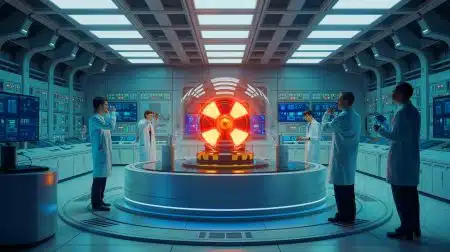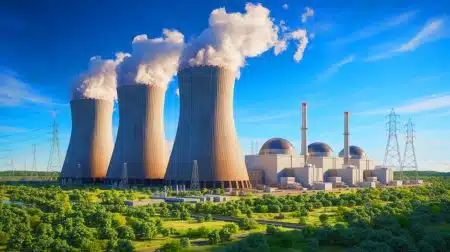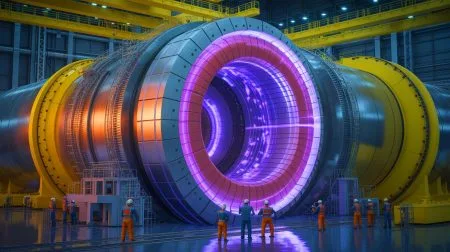| IN A NUTSHELL |
|
In a groundbreaking development, scientists have devised an innovative solution to address two pressing global challenges: plastic waste management and clean energy production. Researchers from the Institute for Basic Science (IBS) in South Korea have successfully developed a system that transforms plastic bottles into hydrogen fuel using sunlight. This pioneering effort not only combats plastic pollution but also provides a sustainable energy alternative. The potential of this technology to alleviate environmental concerns and fuel the future positions it as a remarkable advancement in both waste management and energy sectors.
Photocatalytic Hydrogen Production: A Sustainable Solution
The concept of photocatalytic hydrogen production is not entirely new, but the challenges it presents have hindered its practical application. This process involves using sunlight to drive chemical reactions that produce hydrogen, a clean and efficient energy source. However, maintaining the stability of the catalyst under intense light and chemical stress has been a significant hurdle.
The South Korean team addressed these challenges by stabilizing the catalyst within a polymer network and positioning the reaction site at the air-water interface. This innovative setup mitigates common issues like catalyst loss and reverse reactions, allowing for efficient hydrogen production. By breaking down plastic bottles into byproducts such as ethylene glycol and terephthalic acid, the system releases clean hydrogen, demonstrating stability over two months in various watery environments.
Dr. Lee Wanghee, a postdoctoral researcher and co-first author of the study, emphasized the importance of optimizing every detail for real-world application. The test system, featuring a one-square-meter device placed outdoors, successfully produced hydrogen from dissolved plastic waste, showcasing the potential for larger-scale implementation.
The Potential for Scaling Up
The implications of this plastic waste recycling system are profound. With plastic bottles contributing significantly to global waste, converting them into a clean hydrogen source addresses both environmental and energy challenges. The ability to simultaneously manage waste and produce sustainable energy represents a dual benefit that could significantly impact global sustainability efforts.
Simulations suggest that this technology can be scaled to 10 or even 100 square meters, paving the way for cost-effective, carbon-free hydrogen production. Professor Kim Dae-Hyeong highlighted the dual impact of this research, describing it as a meaningful step towards reducing environmental pollution and meeting clean energy demands.
Professor Hyeon Taeghwan remarked on the reliability of this photocatalytic system, which functions effectively outside laboratory conditions. This advancement could serve as a crucial milestone in the transition to a hydrogen-powered, carbon-neutral society, offering a promising path forward in addressing pressing global challenges.
Challenges and Future Prospects
While the potential of this technology is immense, several challenges must be overcome for widespread adoption. Scaling the system to meet global demand requires significant investment and infrastructure development. Additionally, the efficiency and cost-effectiveness of hydrogen production need to be optimized to compete with existing energy sources.
Despite these challenges, the research offers a glimpse into a sustainable future where plastic waste is transformed into a valuable energy resource. The collaboration between scientists and industry stakeholders will be crucial in advancing this technology and integrating it into existing energy systems.
Continued research and development will focus on enhancing the efficiency of the photocatalytic process and exploring additional applications for this innovative technology. As the world seeks sustainable energy solutions, the potential for turning plastic waste into clean hydrogen fuel represents a transformative opportunity.
The Global Impact of Hydrogen Energy
The implications of hydrogen as a clean energy source extend beyond environmental benefits. Hydrogen fuel cells have the potential to revolutionize transportation, reduce greenhouse gas emissions, and provide a sustainable alternative to fossil fuels. By leveraging plastic waste as a resource, this technology could play a pivotal role in the transition to a low-carbon economy.
The successful implementation of this system on a global scale would not only mitigate plastic pollution but also contribute to energy security and economic development. The ability to produce hydrogen locally could reduce dependence on imported fuels and stimulate job creation in the renewable energy sector.
As nations worldwide commit to ambitious climate goals, the development of innovative technologies like photocatalytic hydrogen production will be essential. Harnessing the potential of plastic waste to fuel a sustainable future is a testament to human ingenuity and the power of collaborative scientific endeavors.
The transformation of plastic waste into hydrogen fuel using sunlight is a remarkable achievement that addresses two of the world’s most pressing challenges. As this technology advances, it holds the promise of reducing environmental pollution and meeting the growing demand for clean energy. How will this innovation shape the future of energy and environmental sustainability on a global scale?
Did you like it? 4.8/5 (20)








Wow, this is mind-blowing! 🌍 How soon can we expect this technology to be implemented globally?
Turning Plastic into Power” – sounds like sci-fi! Is it really feasible on a large scale?
Thank you, Korea, for leading the way in sustainable innovations! 💚
Does this mean we’ll need less recycling infrastructure in the future?
Plastic bottles to hydrogen? That’s some serious alchemy right there! ⚗️
Can this tech work with all types of plastic, or just bottles?
Awesome! So, will this reduce the cost of hydrogen production?
How much sunlight do you actually need for this process?
I’m skeptical. How efficient is this really when compared to other hydrogen production methods?
This sounds like a game-changer for pollution, but what are the potential downsides?